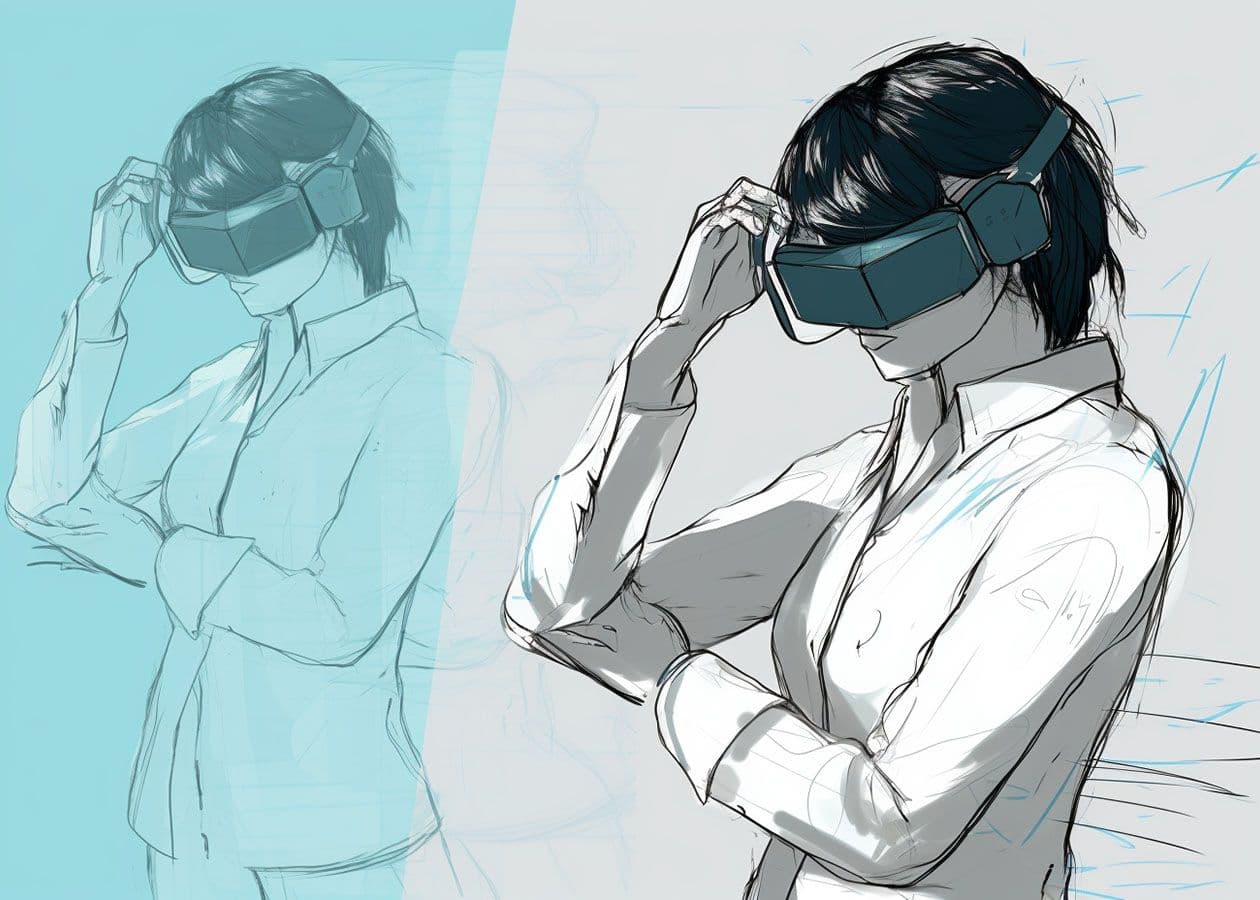
VR designers face challenges such as standardizing object selection, improving locomotion methods, creating consistent shortcuts for basic OS actions, and overcoming social embarrassment. With rapid advancements in VR, solutions to these issues are expected to emerge in the future.
Thanks to innovations like Google Cardboard, many people have already began to immerse themselves into the world of VR. It has been a hot topic in Silicon Valley for a while and is only expected to be more and more popular in the coming years.
It’s interesting to think about what the difficulties and problems VR designers are currently facing.
Obviously there is the general problem of puking after a good round of virtual reality fun, and this may explain why the world record of being in VR is is only a measly 25 hours.
I’m not ready to try to break that record, but I am ready to learn about what goes into designing a VR experience. VR has piqued my interest since I was a kid, stemming from exposure to terrible movies like Spy Kids to not so terrible ones like The Matrix. It’s always been something I couldn’t wait to experience myself. Now that it is a hot topic in the meetup community, I have gone to a few and gathered some main problems these designers* are facing when designing for VR:
*(This is a link to a video of one of the better talks I went to by Timoni West at Designers and Geeks.)
1. Selection
Object selection is not standardized as it is on desktop or phone. In VR, it’s a bit harder, and one big struggle is figuring out how to make selecting objects with raycasting easier for the user. Think of raycasting as the intersection of a ray with the objects in an environment. A ray cast tells the system information about objects in the environment the ray runs into. This is a similar experience to selecting something precisely at a distance with a laser pointer. It’s hard.

2. Methods of locomotion.
Locomotion in VR is a difficult problem to solve for because it can make people want to do things they can’t in reality, like this guy. It will be interesting to see how challenges such as this are solved for in the future so we don’t have to try sticking our heads into the floor any longer! Current methods of locomotion range from treadmills, to walking in room scale VR, to navigating with joysticks (infamous for causing nausea), as well as being shot places by focussing on circles in the UI; similar to the interaction in Google Street View. A method I haven’t tried yet but definitely want to experience is navigating by placing a “photo sphere” on your head which works exactly like how it sounds. Trippy.

3. Basic OS Actions
Another issue designers and developers are facing is that basic OS actions such as undo, copy, paste, edit, delete, save, quit, insert, and switch have yet to be standardized as shortcuts across VR systems. How does one replicate these shortcuts in a VR world? On desktop and mobile these have been standardized with what we call “hotkeys.” However, in VR there aren’t enough controls to utilize hotkeys so in some cases gesture-based shortcuts are used instead. For example to “delete” something in VR the user would throw it over their shoulder. But do we really want to have a weird gesture for every shortcut? It might be kind of awesome, especially as a spectator. One popular idea to mitigate this issue is to use audio commands across platforms. This would prevent the user from having to do too many repetitive gestures.
4. It’s still a little socially embarrassing.
This one isn’t so much a designer’s pain point as it is a user’s pain point. I felt like throwing this in here, because hey — the designers and developers probably try out the software all the time in front of others and get at least a teensy bit embarrassed — I’d bet on it. I know for me it is embarrassing because every time I put a headset on I start “WOW”ing and “OMG”ing forgetting where I am making somewhat of a fool of myself. However, this can be viewed as a good thing because it shows that people are present in VR, and the technology is good enough to trick our brains into thinking we are experiencing something we are not; scary and cool at the same time.
To sum it up, there is a lot to be worked on to make VR a better experience and a ton of room for improvement. It is evolving at a rapid pace, and I can’t wait to see what the future of VR holds for us.

